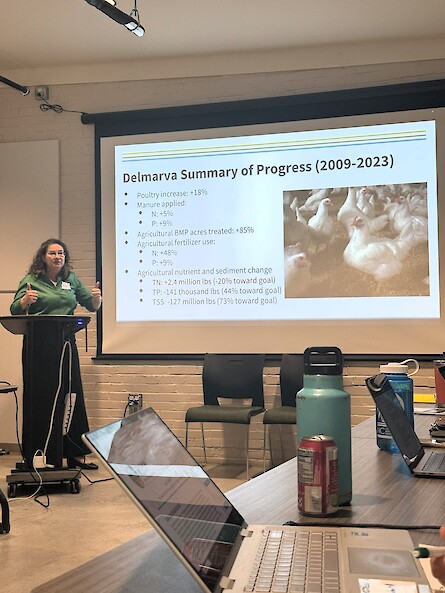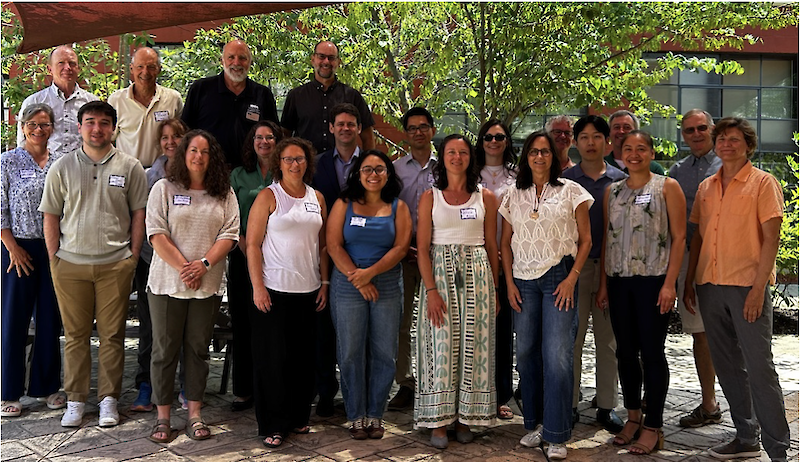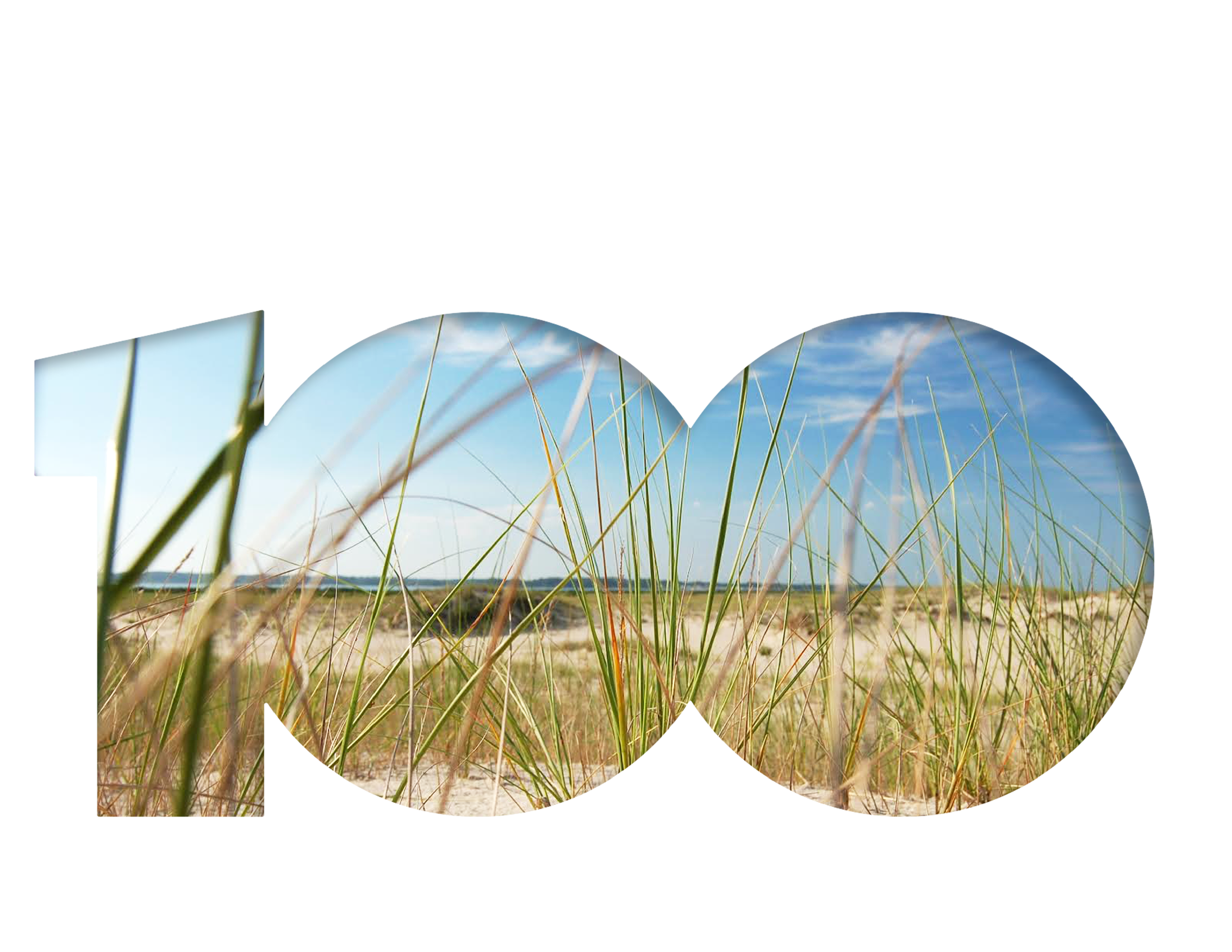A Look Inside a Delmarva Land and Litter Collaborative (DLLC) Workshop
Connor Olsen ·The Delmarva Peninsula is the peninsula between the Chesapeake Bay and the Atlantic Ocean. This area is named after the three states that occupy it: Delaware, Maryland, and Virginia. This area is well known for the amount of farmland and agriculture that takes place. The Delmarva Land and Litter Collaborative (DLLC) is a group of stakeholders from the Delmarva Peninsula. This group includes stakeholders like farmers, chicken companies, environmental groups, academics, and other regulatory agencies.1 These stakeholders have a shared goal of making agriculture on the Peninsula economically sound and environmentally sustainable.1

The DLLC has four strategies that they use to guide their work. These four strategies are Convene, Dialogue, Distill, and Share.2 Convene relates to the relationships and trust among the different stakeholder groups.2 Dialogue refers to the DLLC as a place for scientific discussion and communication.2 Distill means that the DLLC uses their knowledge and findings to help create solutions.2 Finally, share refers to the communication of the findings to the members and the public.2

This meeting took place in Easton, Maryland, on June 23, 2025, and focused on agricultural impacts on Chesapeake Bay water quality. Stakeholders from different sectors came together to review data and discuss goals for this meeting of the DLLC. Participants included the University of Maryland Center for Environmental Science (UMCES), ShoreRivers, The Chesapeake Bay Foundation (CBF), Sustainable Chesapeake, Greenfin Studio, University of Maryland (UMD), University of Delaware (UD), United States Geological Survey (USGS), and several other agencies.

Presentations highlighted data and information pertinent for later discussions. Subsequent stakeholder discussions were used to create a framework for the structure of the rest of the DLLC meeting. Several key problems were identified:
- Nitrogen Lag Times: Nitrogen is one of the main nutrients in fertilizers and waste that can cause extensive water quality issues. Lag times of nitrogen fertilizers, like chicken manure, are greatly impacting the Eastern Shore’s water quality. Lag time refers to how long the nitrogen stays in the soil and groundwater before leaching into larger bodies of water.3 Data showed that lag times are now reaching almost 30 years. This means that nitrogen impacting Chesapeake Bay today may be up to 30 years old.
- Poor Data Monitoring: Data collected from water quality monitoring stations is used to inform water quality targets. These monitoring stations are small devices that are located one meter below the water's surface and can be used to show seven different measurements every 15 minutes.6 The seven different measurements include water temperature, salinity, dissolved oxygen (DO) saturation, DO concentration, pH, turbidity, and fluorescence.6 Despite their importance, some of these stations are poorly monitored. Another problem with monitoring the Eastern Shore is that data collection in Virginia's section is very sparse. During the workshop, the Virginia Institute of Marine Science (VIMS) showed how many stations there are compared to how many stations are actually monitored. The number of inactive stations greatly outweighed the number of active stations.
- Overuse of Inorganic Fertilizers: Inorganic nitrogen fertilizer is being used more than it is needed. Inorganic fertilizers are man-made chemicals that help with farming.7 They are used to add more nutrients to the environment that are not naturally found. This causes the environment to have a hard time cycling the excess nutrients. Fertilizers are used to increase the yields for the farms, but there is a limit of how much is absorbed by the plants.5 Any unused nitrogen by the plants will either sink into the soil or be lost to runoff.
- Variations in Climate: The changes in temperature and precipitation are also a growing problem for the Eastern Shore. The warmer temperatures mixed with the increased use of inorganic fertilizers can cause more dead zones. Dead zones are an area within a body of water that most life cannot survive. Only certain species that are adapted to low dissolved oxygen can survive in these areas. Warmer temperatures cause less dissolved oxygen in the water.4 Loss of dissolved oxygen can cause mass die-offs and a decline in the fish populations. Dissolved oxygen is important for fish because it is how they breathe. Combined with eutrophication caused by excess nitrogen, dead zones can occur more rapidly and become larger. Precipitation also causes more nitrogen runoff from the agricultural fields. This can also speed up the formation of dead zones by increasing the amounts of nutrients and sediments in the water.4
These problems were presented to the rest of the DLLC in hopes of greater understanding of the issues and the potential for solutions. By including different stakeholders, different sectors of the Delmarva Peninsula can have a voice in management. Inclusive management discussions allow for issues and concerns to be discussed and handled preemptively. This also helps with scientific communication throughout the region, which is important in expanding knowledge among stakeholders.
As a Chesapeake Bay native, attending this meeting was exciting and informative. Growing up on the bay, I have always been interested in local water quality management. Chesapeake Bay was one of the main reasons that I decided to pursue my undergraduate degree in Environmental Science and Technology at the University of Maryland. This meeting highlighted some of the important sustainability work being done on the Eastern Shore and helped expand my knowledge and appreciation for this field.
References
- Delmarva Land and Litter Collaborative. (2025). About. Delmarva Land and Litter Collaborative. https://delmarvalandandlitter.net/about/
- Delmarva Land and Litter Collaborative. (n.d.). 2024 Year in Review. https://delmarvalandandlitter.net/wp-content/uploads/2025/03/DLLC-2024-Year-in-Review-3-10.pdf
- McDowell, R. W., Simpson, Z. P., Ausseil, A. G., Etheridge, Z., & Law, R. (2021). The implications of lag times between nitrate leaching losses and riverine loads for water quality policy. Scientific reports, 11(1), 16450. https://doi.org/10.1038/s41598-021-95302-1
- Chesapeake Bay Foundation. (n.d.). Climate change. https://www.cbf.org/issues/climate-change/index.html
- The law of diminishing returns - how farms know when they’ve reached it. Cornell Small Farms. (2019). https://smallfarms.cornell.edu/2018/10/the-law-of-diminishing-how-farms-know-when-theyve-reached-it/
- Continuous Monitoring Program. Eyes on the Bay. (n.d.). https://eyesonthebay.dnr.maryland.gov/contmon/ContinuousMonitoring.cfm
- Cabrera, R. I., & Solis-Perez, A. R. (2017). Mineral Nutrition and fertilization management. Reference Module in Life Sciences. https://doi.org/10.1016/b978-0-12-809633-8.05087-1
About the author
Connor Olsen

My name is Connor Olsen. I have just finished my sophomore year at the University of Maryland, College Park. I am currently an Environmental Science and Technology major with a concentration in ecological technology design. Being born and raised in Maryland I have grown to love the environment and especially the Chesapeake Bay. Thus, I have a strong interest in sustainability and the health of the Bay. I am very excited to be working with UMCES IAN to expand my knowledge and get hands-on experience in the environmental science field.
Next Post > Bridging Science and Community: The 2025 Chesapeake Bay Report Card
Comments
-
Adriana Schulman 6 months ago
Hi Connor, thank you for sharing what you learned at the DLLC meeting! As you mentioned, attending meetings such as these are so important to work towards management strategies that include the voices of as many stakeholders as possible. Also, I hadn't realized that so many established data stations are in disrepair. It is vital to have proper data collection so the community is able to track the progress of any action taken to improve water quality. Spaces such as this meeting allowed this concern to be voiced and will lead to a step in the right direction.
-
Julia Frangenberg 6 months ago
Hi Connor, this is a great blog! I loved how you contextualized the role that agriculture on the Delmarva peninsula plays in the Chesapeake Bay's water quality. It was very interesting to read different stakeholders' perspectives on how the peninsula can be better managed to prevent runoff pollution. This is a great example of how effective transdisciplinary approaches can be in helping stakeholders understand each other's concerns and finding a mutually beneficial solution.

